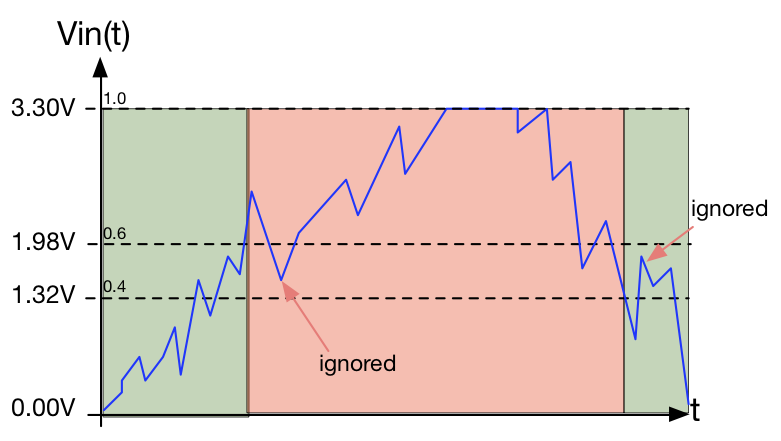A technique for reducing (and sometimes effectively eliminating) the effects of noise when detecting if a signal crosses a threshold. Consider the figure below. This shows an analogue signal ![]() varying with respect to time
varying with respect to time ![]() .
.

Consider the example of the blue waveform in the figure.
The signal is below the lower threshold at ![]() , so the output is GREEN.
, so the output is GREEN.
- In the GREEN (lower) state, the system will only switch to the RED state when the signal crosses above the upper threshold of 1.98V.
- Once in the RED (upper) state, the system will now only switch to the GREEN state when the signal crosses below the lower threshold of 1.32V.
As the signal rises above the upper threshold of 1.98V, the output state changes state to RED. Note that signal noise causes the signal to dip down below 1.98V shortly after, but that is ignored as it is still above the lower threshold.
Later, the signal drops below the lower threshold causing a state change. Again due to noise, the signal rises above the lower threshold but is once again ignored as it does not exceed the upper threshold.
For this example, the noise margin is ![]() .
.
A device that employs this technique in this way is known as a Schmitt Trigger https://en.wikipedia.org/wiki/Schmitt_trigger
